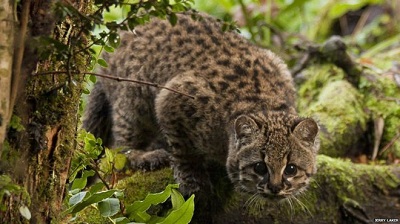It’s the smallest cat in the Americas, occupying the smallest area of land.
Listed as vulnerable to extinction, the güiña wildcat of Chile has lost much of its natural home as forests are chopped down or converted to farmland, according to BBC.
And, like many carnivores, it’s at risk from human persecution over fears it might kill livestock.
However, new research shows the animal is able to survive near human settlements on agricultural land.
Its biggest threat is being squeezed out when land is broken up into smaller areas, say conservationists.
The guiña is known variously as the little tiger cat, little spotted cat or Chilean cat. About half the size of the domestic cat, it is one of the most threatened cat species in South America.
The wildcat lives only in central and southern Chile and in a narrow strip of Argentina. According to the IUCN, there are only about 10,000 individuals left in the wild.
Its natural habitat is rainforest, but it has also been seen in pine or eucalyptus plantations or close to agricultural areas.
Research led by the University of Kent, UK, found that habitat fragmentation, and the subdivision of large farms into smaller ones, are the biggest threats facing the animal.
“This is because there is a higher risk of human interaction and persecution in areas where there are more farms; a greater pressure on natural resources through increased timber extraction and livestock grazing; and even competition for food from domestic animals kept as pets,” said Dr Nicolás Gálvez, who is now a lecturer at the Pontificia Universidad Católica de Chile.
More than two-thirds of Chile’s temperate rainforests have been lost over 25 years. However, through a series of questionnaires, camera-trap data and remote-sensed images the researchers found that the güiña is remarkably adaptable to forest loss.
They say large, intensive agricultural areas are actually suitable for the güiña and should not be dismissed as poor quality habitat.
H.Z

